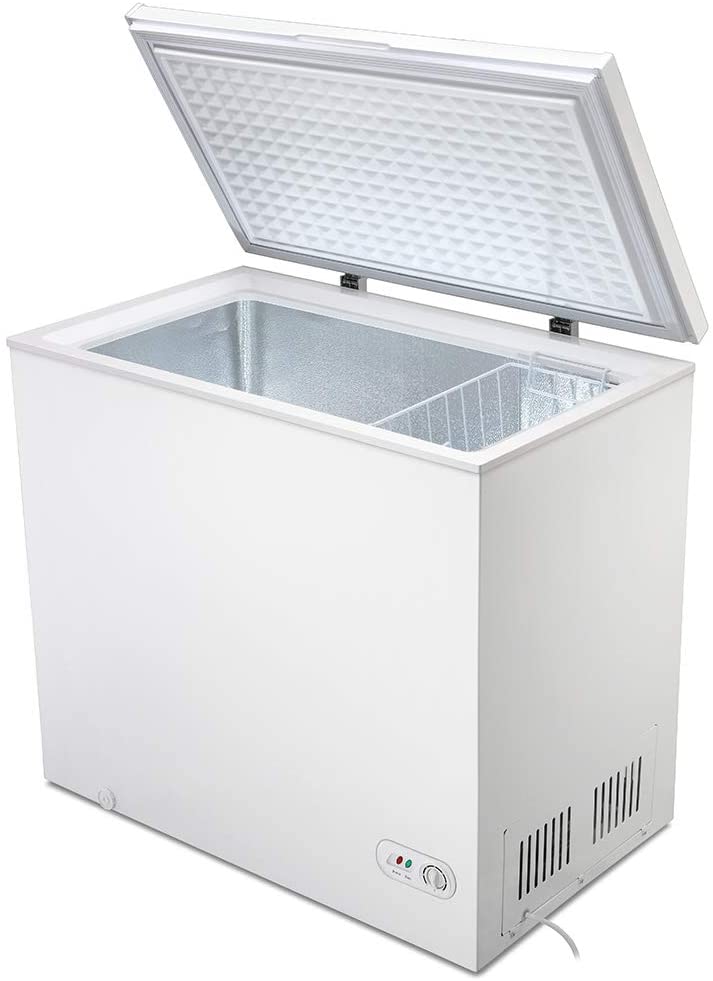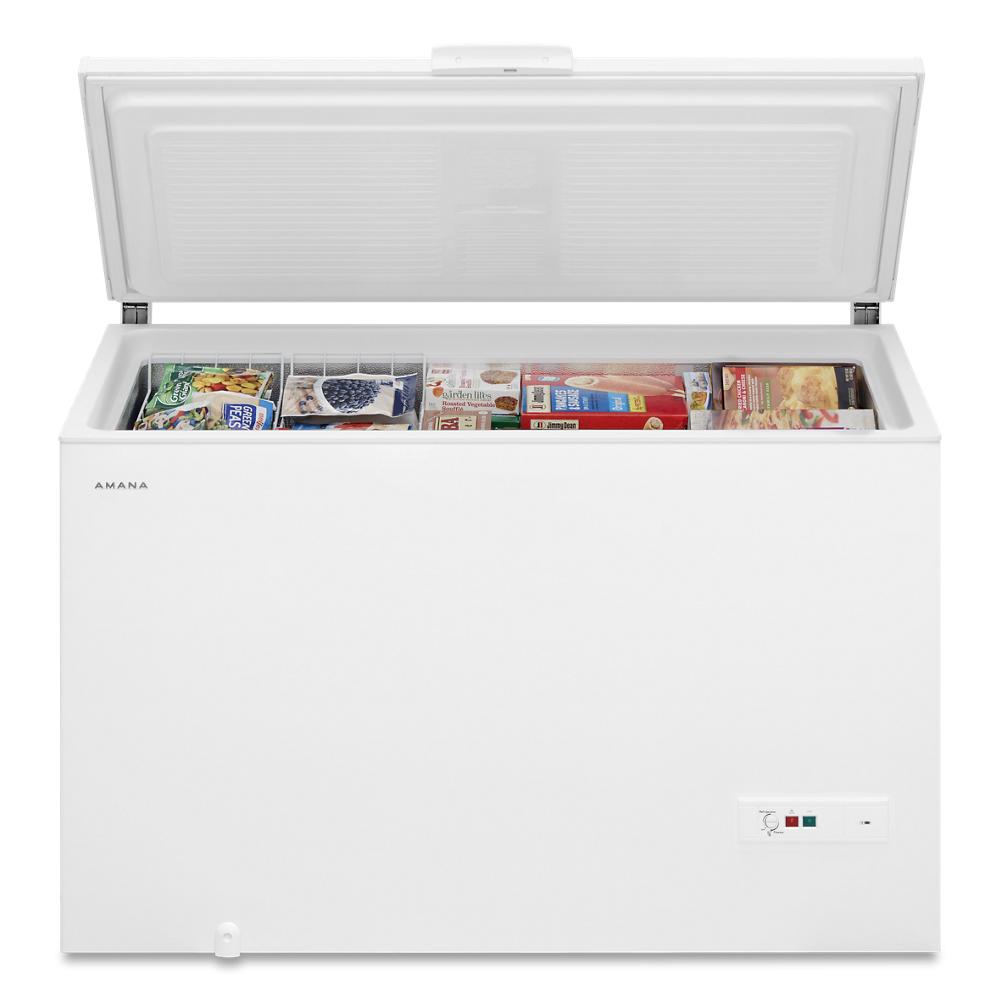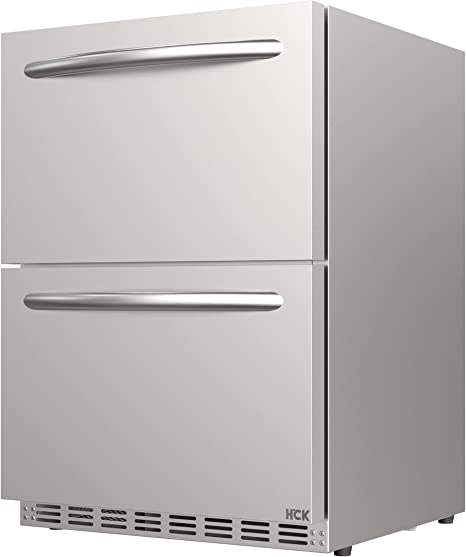What Is The Width Of A Typical Chest Freezer?
Buying a chest freezer could prove to be the best decision you will ever make. If you have a chest freezer, it can expand the variety of food you can keep.
When buying a chest freezer for your home, you will need to know how much space you will need to dedicate to it, as well as the typical width, so that you can make an educated decision.
We looked at a few chest freezer manufacturers to find out.
- Chest freezers typically come in four size ranges:
- Compact – 21–28″ width, 32–34″ height, and 19–22” depth
- Small – 29–38″ width, 32–34″ height, and 22–27″ depth
- Medium – 54–65″ width, 33–36″ height, and 24–28″ depth
- Large – 72–84″ width, 31–34″ height, and 27–32″ depth
Regardless of the size of your home space, it will fit. The end of the road is not yet known.
When buying a chest freezer, you should take into account more important information. If you want to know what those are, read further.
Table of Contents
How Can I Identify What Size Deep Freezer I Need?
If you’ve already decided to buy a chest freezer, you should choose one that will fit your lifestyle, home space, and freezing needs.
The size of the chest freezer will always be dictated by these. To put all these ideas into perspective, here are some examples of real life.

Compact Chest Freezers
This kind of chest freezer is an ideal choice for people living alone in a small apartment.
Compact chest freezers are made to fit just about anywhere in your loft, with a 21–28′′ W x 32–34′′ H x 19–22′′ D dimensions.
Most of them only weigh around 50 to 70 lbs. and are equipped with two rollers, so you can move them around quickly.
Some good bits don’t end there. Around 120 to 175 lbs of food supplies can be held in a chest freezer.
They only consume 200 kWh of electricity, which equates to a small annual utility cost of around $26 or an additional $2.17 monthly cost.
Large Chest Freezers
If you have a large number of different foods that you want to freeze for future use, then a large chest freezer is the way to go.
When the chest freezer’s dimensions start at 72–4′′ W x 31–34′′ H and 27–32′′ D, it is considered large.
You can freeze seasonal fruits and vegetables in your home garden or during the off-season if you need a large chest freezer.
Meat-based cuisines and seafood cuisines are the main offerings of a small food business.
Small Chest Freezers
Small chest freezers measure 29–38′′ W x 32–34′′ H x 22–27′′ D. They are ideal for a small family of four and couples living in a small one-bedroom apartment.
Their small frame allows them to store up to 300 lbs of food that can last for a long time.
Small chest freezers can come with two storage baskets and a divider since they are bigger than their compact counterparts.
These are helpful when you don’t want your smelly supplies to get mixed up with your treats.
It won’t take a big chunk of your income as they only use up to 250 or 300 kWh per year, which will only cost you $2.50 per month.

Medium Chest Freezers
A medium-sized chest freezer will serve your family better if they are large. If you pack and freeze big cuts of meat like a quarter cow, buying a medium chest freezer is a good idea.
You can store at least 350 pounds of food in this chest freezer and leave it in your garage with its large dimensions of 54–65′′ W x 33–36′′ H x 24–28′′D.
It is important to remember that a chest freezer of this size can cost you more on your energy bill than smaller ones.
If you need a medium chest freezer or the smaller ones to supplement the built-in freezer in your fridge, you should thoroughly think about this.
The 1.5 cubic feet rule can be used for every person in your home. You don’t want to buy big freezers that you might not even be able to fit in.
How Can I Measure Freezer Capacity?
We have been writing the sizes of the chest freezers through their width, height, and depth.
These can’t tell you the freezer’s capacity, so if you buy a freezer based on these, you’ll get frustrated.
The capacity of all fridges and freezers is measured in square feet. The different sizes of chest freezers can be used as examples.
- Compact chest freezers – 3 to 5 cubic feet.
- Small chest freezers – 5 to 9 cubic feet.
- Medium chest freezers – 10 to 16 cubic feet.
- Large chest freezers – 17 cubic feet and above.
You can try these simple steps if you want to buy a chest freezer exactly like your old one.
- The chest freezer’s width and height should be measured in feet.
- To get the interior height and width of the chest freezer, you need to extend the tape measure across the inner walls.
- Take the measurement and write it down on a piece of paper.
- The tape measure should be extended from the bottom to the lid to get the depth measurement in feet.
- Simply divide the numbers by the number of feet to get volume.
- To get the freezer capacity in square feet, you need to divide the product by 1,728, which is the value of 1 square foot in inches.
- The process can be expressed like this: CAPACITY equals HWD/1,728.
Where Can I Put a Chest Freezer?
Imagine that you already own a chest freezer. Where would be the best place to put it? The answer depends on the amount of space you can spare in your home.
A small chest freezer can fit into tight spaces in your kitchen without being intrusive. It could be a good idea to place it near your countertop.
As for the large and medium sizes, you can store them in the garage, as they take up more space.
Extreme heat or cold can cause a chest freezer to malfunction, so remember that the garage must be well insulated.
It should be positioned in an area away from sunlight to have good airflow.

How Much Space Is Needed for a Chest Freezer?
The temperature in the freezer has to be kept at the proper temperature. If you want to do that, you need to make sure your chest freezer has the minimum air clearances.
The back of a chest freezer needs to have at least 3 inches of air clearance. What is the reason you should follow the air clearances?
The air can smoothly enter, circulate, exit, and circulate again in the freezer because of this.
It’s like a fire of oxygen to put off the chest freezer if you don’t put enough air clearance around it.
Frequent temperature fluctuations and problems with condensation can be caused by blocking airflow.
Conclusion
The best value for money will be provided by chest freezers, along with other forms of freezing and refrigerating equipment.
To live a life with less food hassle, choose the right chest freezer size according to your lifestyle, freezing needs, and available space.

Foodie and a passionate cook, I am here to share all of what I know about cooking, kitchen, and food prepping.
Follow me for delicious and healthy recipes.







